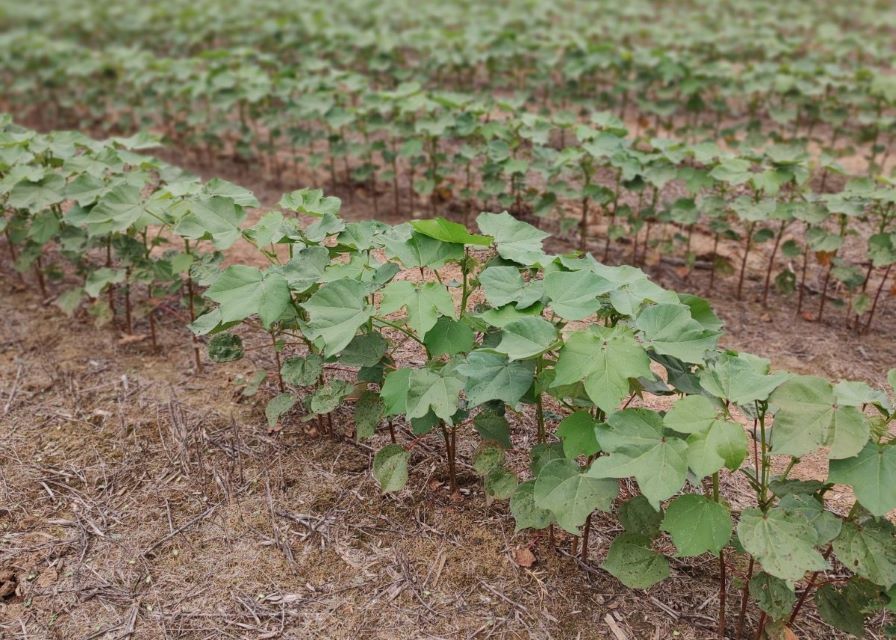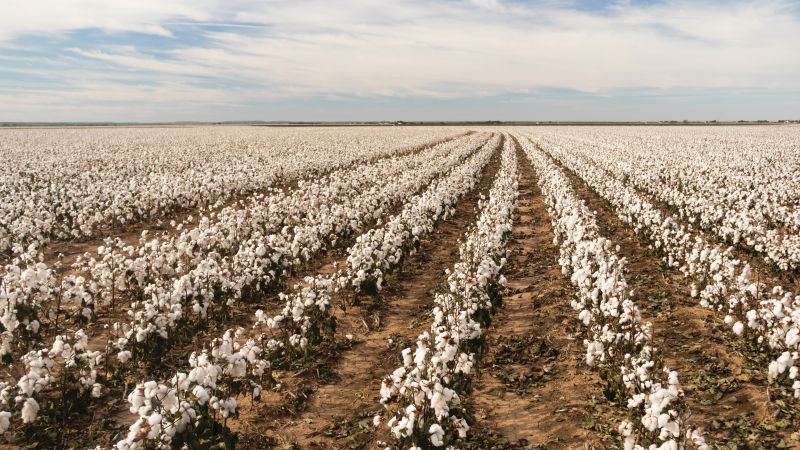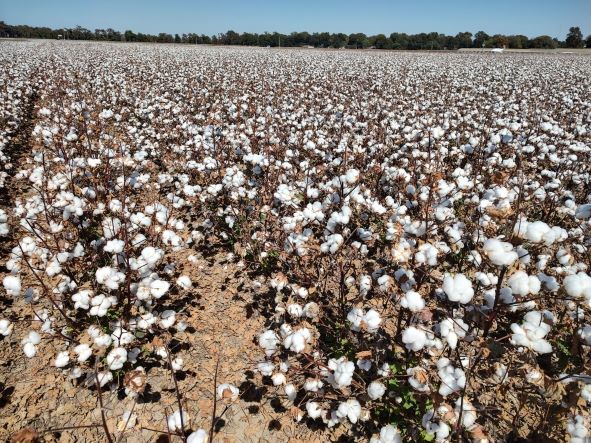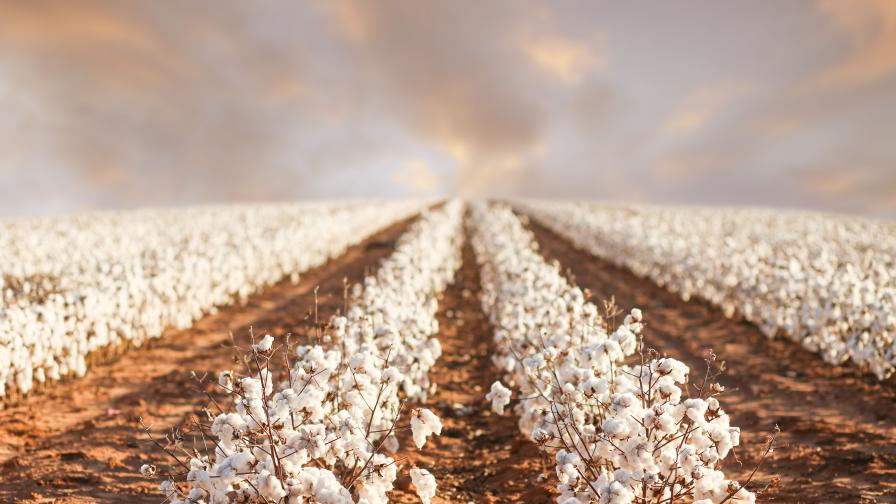Uncovering the Roots of Climate-Resilient Cotton
Cotton grown in Clemson University greenhouses leads scientists to discover root traits in Upland cotton that can significantly enhance water use efficiency. (Photo: Clemson University)
Cotton is an essential crop for the U.S. economy, but traditional breeding practices have unintentionally left modern cotton varieties vulnerable to climate change stresses.
A new study is shedding light on how to make cotton more climate-resilient through improved water use efficiency.
Water use efficiency, or WUE, is a critical trait for crop resilience in the face of climate change. It measures the amount of biomass, or economic yield produced per unit, of water used, often summarized as “crop per drop.”
A research team led by Clemson University’s Sruthi Narayanan has discovered that certain root traits in upland cotton can significantly enhance WUE. They found that root weight and length, surface area, and volume of very fine roots (less than 0.25 mm in diameter) are key to improving water use efficiency.
“These traits will be valuable in developing the next generation of water-use-efficient upland cotton varieties,” says Sruthi Narayanan, Associate Professor of Crop Ecophysiology.
Upland cotton is a relatively drought–tolerant plant and can grow in a variety of climates. Current varieties were developed based on above-ground traits such as harvest index, boll number, boll weight, seed weight, and fiber quality.
“A major limitation to yield is root exploration failing to keep up with boll growth,” Narayanan says. “This imbalance between root and shoot activity affects the ability of the plant to fill bolls.”
Enhancing the cotton root system can help increase a plant’s ability to acquire water and nutrients and maintain productivity under most conditions. This study tested genotypes from the major cotton-growing regions in the United States — Western, Southwestern, Mid–South and Eastern. Cotton varieties Deltapine 14, Station Miller, and Southland M1 performed best in the study.
“Cotton genotypes that can maintain water –use –efficiency, even when root growth is limited by soil hardpans, can be good selections for the southeastern United States,” says Om Prakash Ghimire, doctoral student and lead author for a paper about the project.
Hardpans, compacted soil zones that neither roots nor water can penetrate, pose a significant problem affecting plant growth, leading to yield losses of up to 50% and making plants more susceptible to drought stress.
In addition to Narayanan and Ghimire, other researchers from Clemson were Walker Spivey, Michael Jones, and William C. Bridges. Vasu Kuraparthy from North Carolina State University also participated in the study, as did Todd Campbell and Joe Thomas, researchers with the United States Department of Agriculture Agricultural Research Service (USDA ARS).
This research was funded by USDA ARS and Cotton Incorporated. Future studies will verify these results with more genotypes under field conditions and evaluate lint yield in relation to root traits and WUE, as well as verify the results under different soil and water conditions.










